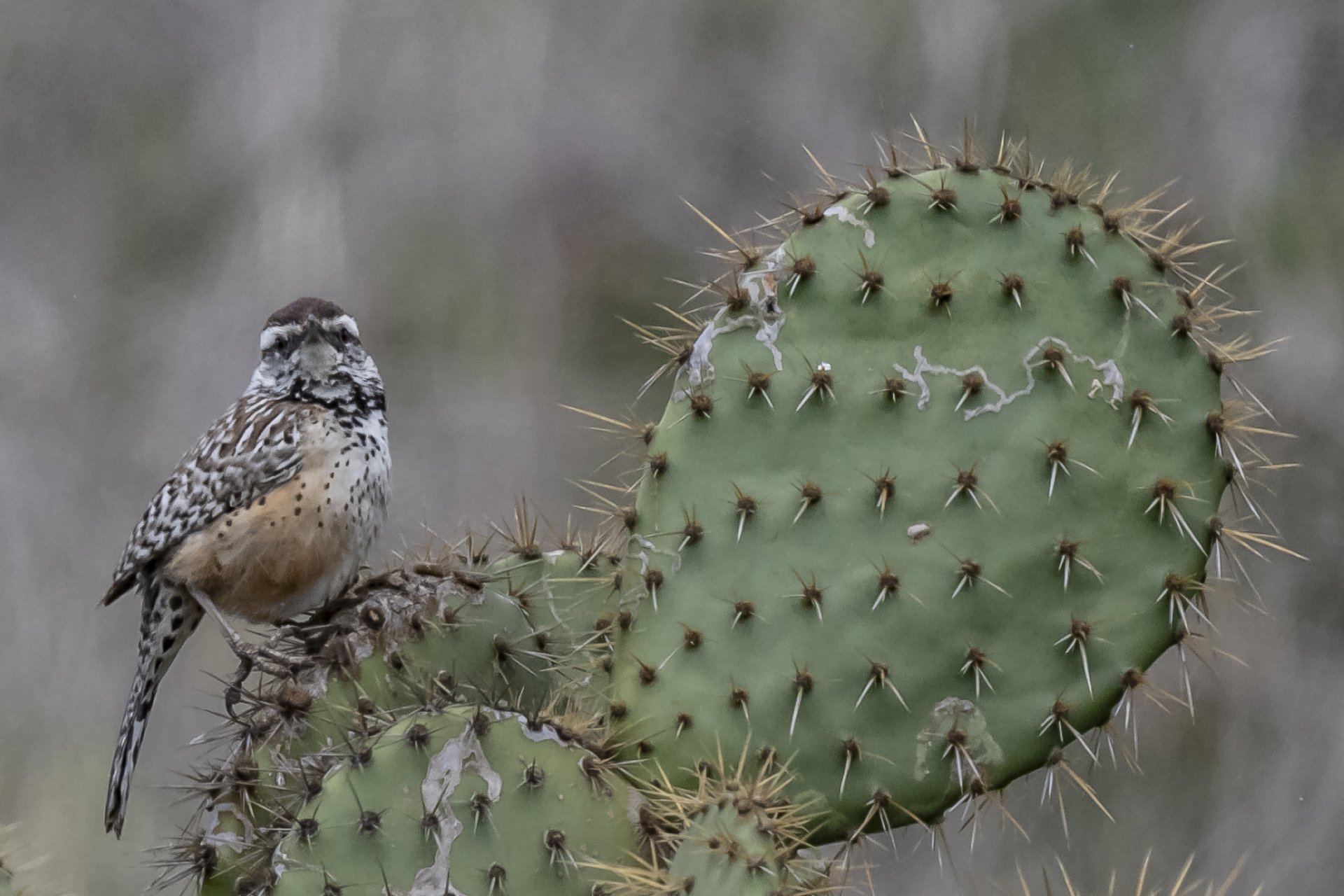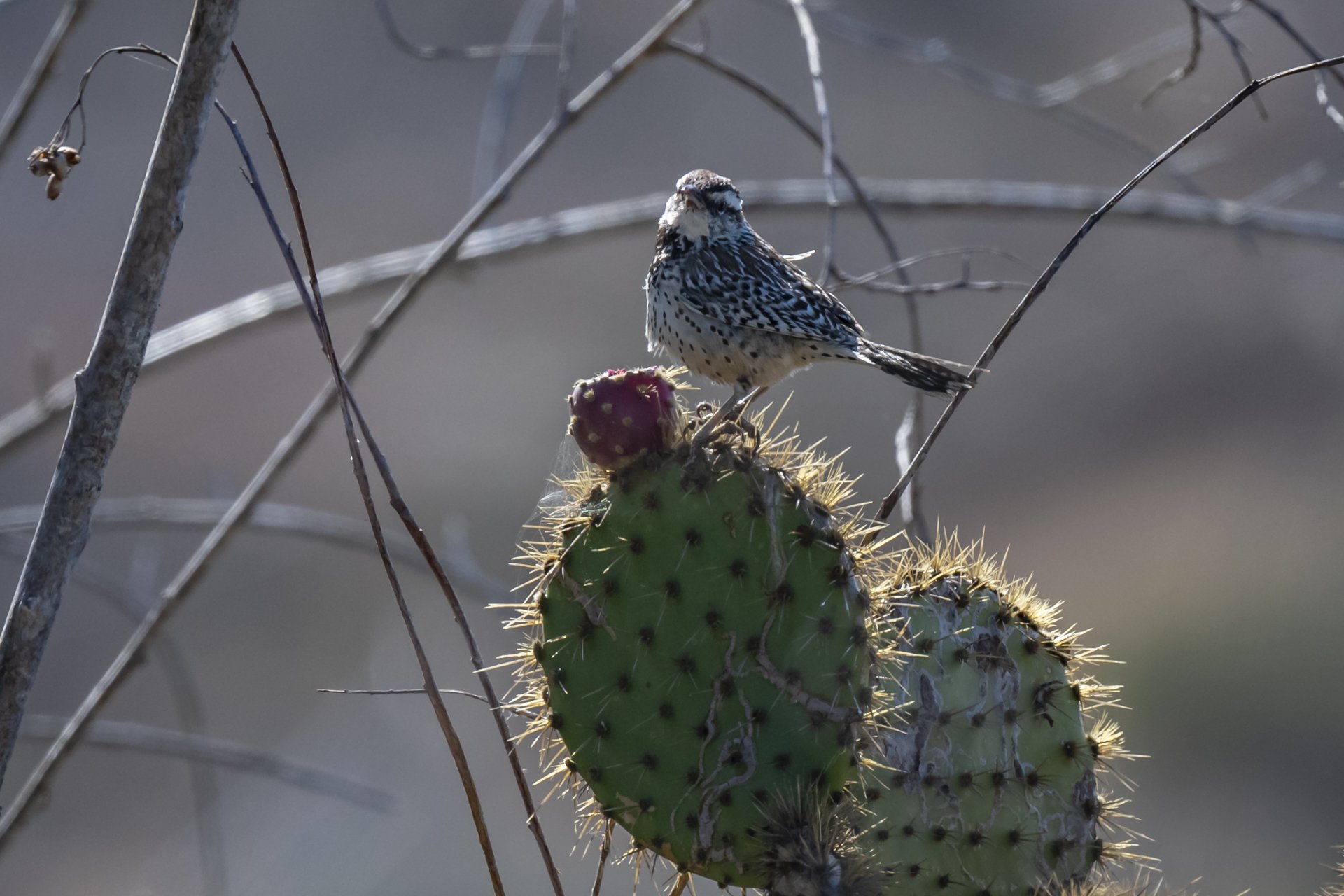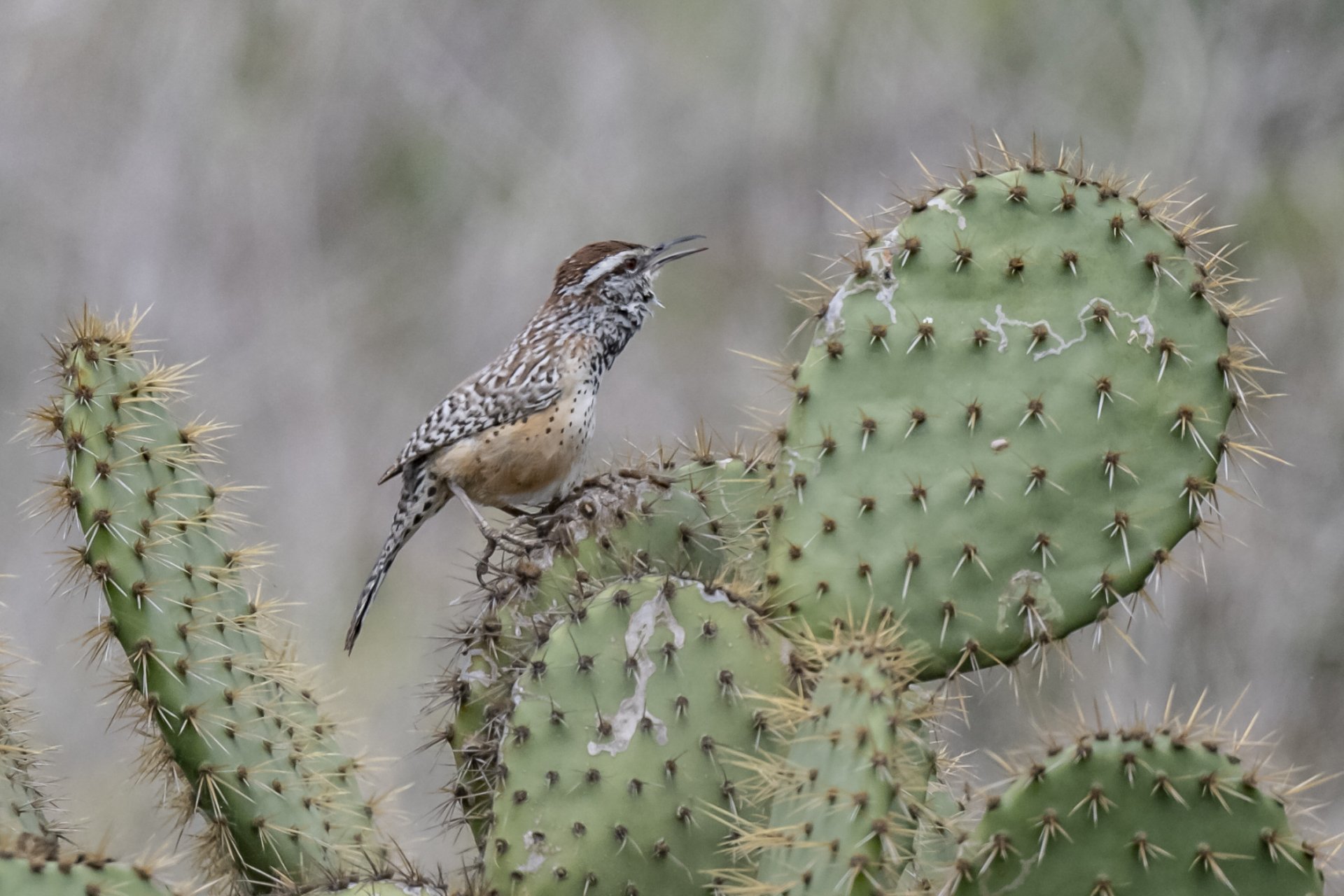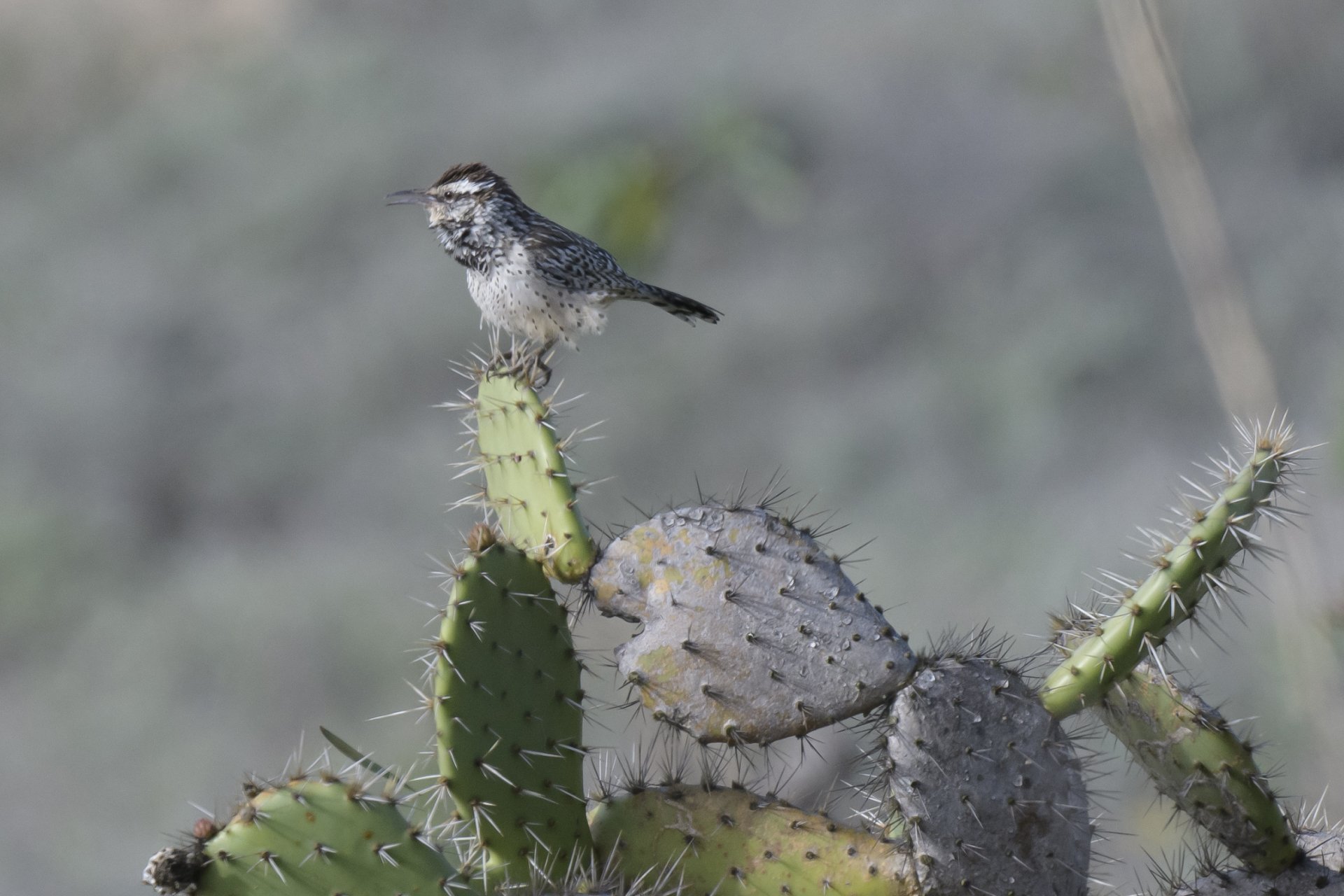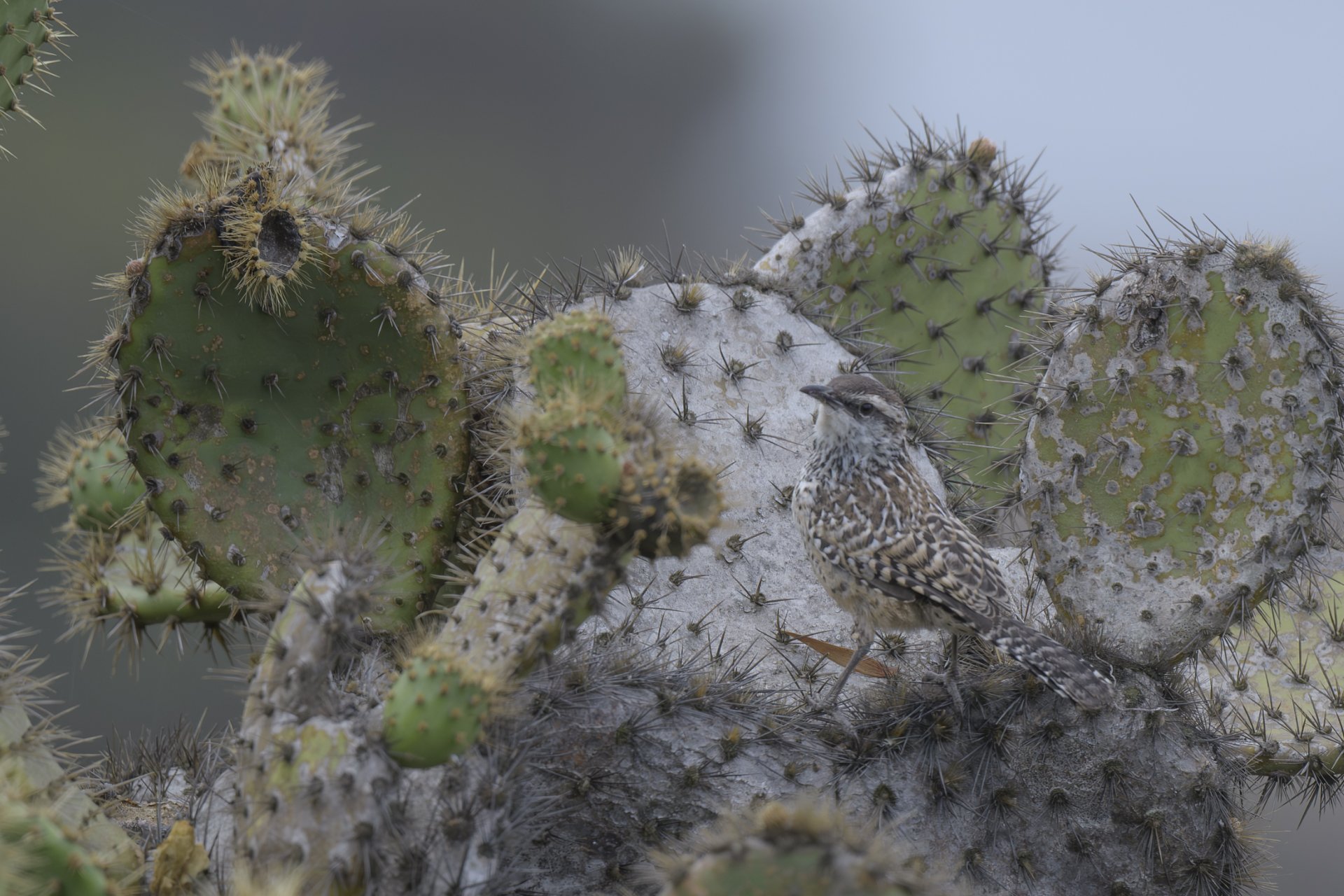Cactus Wren of the Palos Verdes Peninsula By Palos Verdes Peninsula Land Conservancy Biologist Olivia Jenkins - Photos By Board member and Cactus Wren Monitor Randy Harwood
The Coastal Cactus wren is one of the rarest and most imperiled wildlife residents in the coastal southern California region, including the Palos Verdes Nature Preserve. As its name implies, this uniquely adapted inhabitant thrives among cactus-dominated patches of coastal sage scrub, living and nesting within dense stands of native prickly pear and coastal cholla cactus. Cactus wren populations are steeply declining across their southern California range because of wildfires, invasion by non-native plants, heightened predation pressure in urban areas, unfavorable weather conditions (drought, seasonal shifts in rainfall, and cool early spring temperatures), and human disturbance. These factors have created habitat fragmentation throughout Southern California. The State of California has recognized this decline by designating the cactus wren a “Species of Special Concern.” This status provides specific protections under state law. Palos Verdes’ coastal cactus wrens have not escaped this decline. Despite all of the challenges they face, Palos Verdes’ small population has found a way to persist despite a host of daunting challenges.
Along with restoration efforts to create more habitat for the Cactus wren, the Conservancy has a community science monitoring program. The program trains volunteers to make observations of the Cactus wren on their nesting, breeding locations and other characteristics. Volunteers spend several months each year recording their field observations using a mobile app (Survey123). With the help of these dedicated volunteers, we now have a better understanding of such things as how close the wrens stay to their habitat and how much they explore developing habitat.
With the help of annual survey results from the observations, we have confirmed that Cactus wren of the Peninsula spend ninety percent of their foraging time on the ground, feeding on insects year-round, and feeding on fruit and plants during cooler months. Adult birds are highly sedentary and tend to return to the same breeding territory each year. They infrequently explore additional habitat, only doing so if they need to expand their forage area. The wren’s tendency to stay close to its natal territory and not move great distances underscores the importance of having quality habitat throughout the preserves.
Both last year and this year, Cactus wren were found on the “core” areas of Alta Vicente, Three Sisters, Filiorum, and Ocean Trails. Nests were present in Alta Vicente, Three Sisters, Filiorum, and Ocean Trails Reserves. Juveniles were observed at Ocean Trails, Three Sisters, and Alta Vicente Reserves. In 2023, cactus wren were also observed in new locations, including the White Point Nature Preserve and Abalone Cove Reserve. Further analysis of data collected by volunteer monitors will determine the reasons. Nesting success during the 2023 breeding season in Alta Vicente and Ocean Trails Reserves are hopeful signs.
With new phases of the restoration at Abalone Cove, planting coastal sage scrub and cactus scrub habitat and exposing overtopped mature cactus, we expect to observe more cactus wren activity in future years. Additionally, the acquisition of the new 96-acre Wildlife Corridor north of Abalone Cove may provide cactus wren easier access to the “core” reserves through the habitat corridor linking Filiorum, Three Sisters, Portuguese Bend, Forrestal, and the new Glass and Lay Reserves.
Based on survey results, the Conservancy has outlined several adaptive management activities of targeted habitat enhancement to help the cactus wren. Recommended activities will focus on enhancing and protecting mature cactus stands and giving priority to those that have recently supported nesting. Invasive non-native shrubs (especially Acacia) will be removed from cactus-rich areas, new cactus plantings will be installed and foraging habitat (bare ground) surrounding cactus patches will be created. Possible implementation of nesting boxes, transplanting adults and swapping eggs from nearby populations for genetic longevity purposes are also options.
To assist the project and help save our local cactus wren population, become a citizen scientist. Visit: pvplc.org/volunteer






